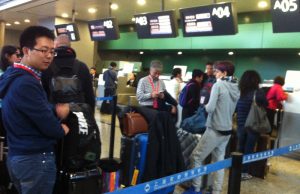Nepal harvest rush threatens “Himalayan Viagra”
KATHMANDU (Reuters) – For decades a rare fungus valued as an aphrodisiac and dubbed “Himalayan Viagra” has been a source of income for poor villagers in Nepal’s remote Himalayan foothills.
Men, women and children stream into high meadows every year to harvest the fungus called Yarsagumba, which grows from dead moth larvae. High quality specimens fetch thousands of dollars a kilo.
But experts say the fungus, found only above 3,500 metres (11,480 feet), is under threat and yields are falling, threatening the livelihood of thousands of people who depend on it for up to 70 percent of their income.
“Over-harvesting, premature harvesting, destruction of the pastureland, and perhaps climate change are the major causes of decline,” said Uttam Babu Shrestha, a graduate student at the University of Massachusetts. “If this continues it could become extinct soon.”
Known as Yartsa gunbu in Tibet, meaning summer grass winter worm, the parasitic fungus kills and then grows on ghost moth larvae in the ground.
Although there is so scientific evidence, the small fungus is prized in traditional Chinese and Tibetan medicines as a tonic to increase vigour.
During the annual May and June picking season thousands of Nepali villagers journey in mule and yak trains to high pastures to look for the tiny buds that protrude from the ground.
Shrestha said villagers who collected several kilos of Yarsagumba 10 years ago now find only a few pieces roughly the size of a potato chip.
“This year has been the worst. Many collectors in Dolpa returned without any,” said Shrestha, referring to a region bordering Tibet.
The area, where 50,000 people look for the fungus every year, accounts for more than half of Nepal’s annual harvest, which topped 1,170 kilos (2,577 pounds) last year.
Chinese demand for the fungus is soaring. Villagers received $6 (3.82 pounds) for a piece of Yarsagumba about the size of a chilli this year – twice the amount they received last year. In Kathmandu, high quality fungus sells for up to $31,000 a kilo, according to traders.
DAMAGE TO ENVIRONMENT
Commercial collection of the fungus began some 30 years ago.
Nepali villager Tshewang Lama, who lived in a village bordering Tibet, saw how some Chinese army officials in the neighbouring Tibetan town of Taklakot took drops of Yarsagumba as tincture to increase immunity, cure tuberculosis, fatigue, paralysis and cancer.
Lama used the fungus to cure his sleep disorder and other ailments and become one of the first gatherers.
Shrestha said abandoned trash, open defecation and trees cut for cooking and heating damaged the hills where the fungus grows.
“If these are not checked in time the environmental cost will be bigger than its economic benefits,” he explained.
Officials said the government collected $132,000 from the export of the fungus in 2011, but analysts said the figures may be low because many villagers sell their crop directly in Tibet without reporting transactions.
Filmmaker Dipendra Bhandari, who made the documentary “Journey to Yarsa” about the fungus harvest, said in several remote villages children accompany their parents during the picking season when schools are closed for two months.
He added that it can be dangerous and villagers fall sick or die during the long journey. In 2009, seven gatherers were killed in a fight with locals over the fungus in west Nepal, and two years earlier at least 16 people perished when a snowstorm buried their camp in Dolpa.
Lama believes the government should regulate trade and strengthen local institutions to ensure pickers get the maximum benefits from the trade.
“It is a money plant. We should conserve it so the harvest becomes sustainable in the long run,” Lama said.














